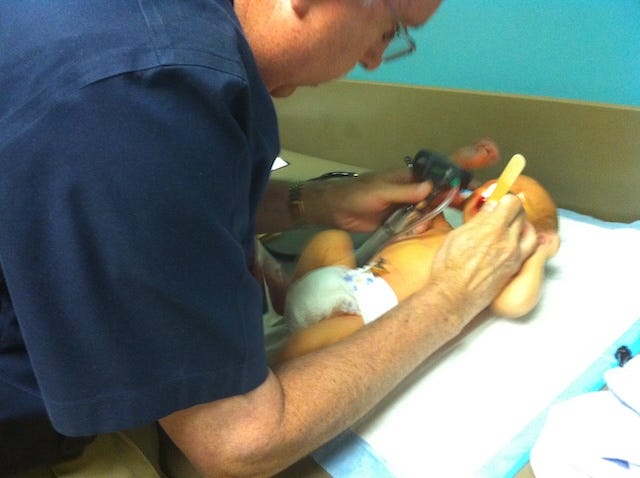Childhood Vaccines
The Myth of no control groups
Childhood Vaccines and the Myth of “No Control Groups”

One of the most common myths spread by vaccine opponents is that childhood vaccines were never tested against control groups. The claim sounds alarming—but it’s simply false.
Every routine vaccine recommended for children in the United States was studied in controlled trials before being licensed. Some used placebo groups. Others, when an older effective vaccine already existed, used an active comparator. Let’s look at the evidence.
In spite of RFK Jr. Stating otherwise - we have the data - he doesn’t because he chooses not to.
The Routine Childhood Vaccine Schedule
Children receive vaccines against:
Hepatitis B
Diphtheria, Tetanus, Pertussis (DTaP/Tdap)
Haemophilus influenzae type b (Hib)
Pneumococcal conjugate (PCV13, PCV15, PCV20)
Poliovirus (IPV)
Rotavirus
Measles, Mumps, Rubella (MMR)
Varicella (chickenpox)
Hepatitis A
Influenza
Human Papillomavirus (HPV)
Meningococcal (MenACWY, MenB)
Were They Studied With Control Groups?
Yes. All of them.
MMR, Varicella, and Rotavirus vaccines were licensed after randomized controlled trials (RCTs) compared vaccinated children to placebo groups, measuring both protection and adverse events .
Pneumococcal conjugate vaccines (PCV) were tested in large-scale RCTs—like the Kaiser Permanente trial of PCV7 that included nearly 38,000 children .
Hib, Polio, and Hepatitis B vaccines all had controlled clinical trials before licensure. In fact, the inactivated polio vaccine was one of the largest RCTs in history, with over 1.8 million children enrolled .
HPV vaccines were tested in placebo-controlled trials with tens of thousands of adolescents .
Meningococcal vaccines likewise had controlled studies, though many were done in adolescents and young adults given the age of highest risk.
What About “No Placebo”?
When an older vaccine already existed (for DTP, Hib, influenza), new versions were tested against those vaccines—not saline placebo. This isn’t a shortcut. It’s ethical: once protection is proven, withholding it from children would be unacceptable.
So yes—some vaccines didn’t use a saline placebo in their latest trials. But all used control groups of some kind, and every vaccine was studied for safety and efficacy before licensure.
Beyond the Trial: Ongoing Safety Monitoring
Pre-licensure RCTs aren’t the end of the story. Post-licensure monitoring—through systems like VAERS, the Vaccine Safety Datalink, and large cohort studies—tracks millions of doses.
Rotavirus vaccines were pulled and reformulated after monitoring revealed a risk of intussusception.
Older DTP vaccines were replaced by today’s safer DTaP.
This continuous surveillance ensures vaccines remain among the safest medical interventions.
Bottom Line
Every childhood vaccine in use today went through controlled studies. Some had placebo groups. Others used active comparators once effective vaccines already existed.
The myth that “vaccines have no control groups” doesn’t stand up to scrutiny. Controlled trials—and decades of safety monitoring—prove the opposite: vaccines are among the most rigorously tested interventions in medicine.
And because they want references - here they are.
References
Jacobson RM. Routine Childhood Vaccines Given From 1 Through 18 Years of Age. Mayo Clin Proc. 2020.
Di Pietrantonj C, et al. Vaccines for Measles, Mumps, Rubella, and Varicella in Children. Cochrane Rev. 2021.
Maglione MA, et al. Safety of Vaccines Used for Routine Immunization of U.S. Children: A Systematic Review. Pediatrics. 2014.
Meissner HC. Understanding Vaccine Safety and the Roles of the FDA and the CDC. N Engl J Med. 2022.
Kandasamy R, et al. Non-Specific Immunological Effects of Selected Routine Childhood Immunisations. BMJ. 2016.



Great summary… informative and simple 👍
I was in the initial trial of the Salk vaccine when I was a first grader; I got the placebo and had to be given the real stuff subsequently. So yes, there was a control group.